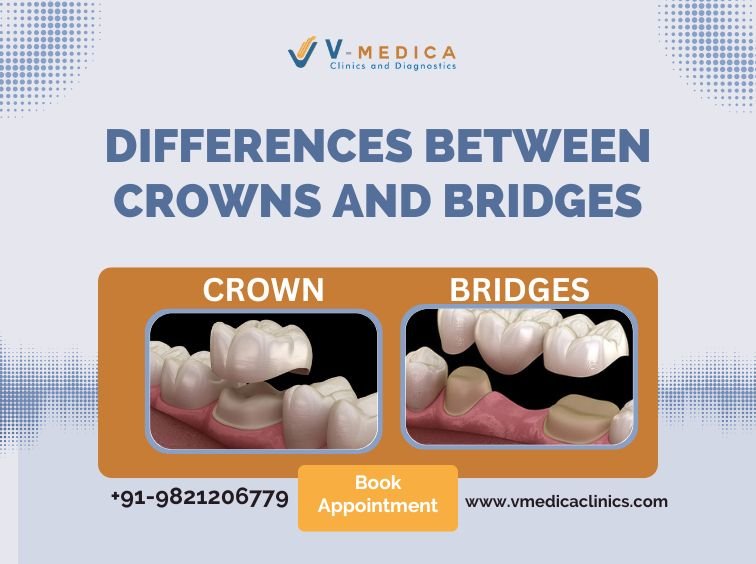When it comes to dental care, understanding the nuances of different procedures can help you make informed decisions about your oral health. Two common treatments that often get confused are dental bridges and crowns. While both serve to restore teeth and enhance smiles, they serve different purposes and are utilized in distinct situations. Let’s delve into the details to understand the difference between dental bridges and crowns.
Dental Crowns:
Dental crowns, sometimes referred to as caps, are prosthetic devices used to cover damaged or decayed teeth. They offer strength, protection, and enhanced aesthetics because they are created to fit precisely over the whole visible portion of the tooth. Crowns can be made from various materials such as porcelain, ceramic, metal alloy, or a combination of these materials. Each material has its own set of advantages and is chosen based on factors like durability, appearance, and location within the mouth.
When are Dental Crowns Recommended?
To Protect Weak Teeth:
Teeth weakened by decay, large fillings, or fractures may benefit from the additional support and protection provided by crowns.
After Root Canal Treatment:
Following root canal therapy, a crown is often placed over the treated tooth to strengthen it and prevent further damage.
For Cosmetic Enhancement:
Crowns can improve the appearance of misshapen, discolored, or poorly aligned teeth, enhancing the overall smile aesthetics.
To Anchor Dental Bridges:
Crowns are used as abutments (supporting structures) to anchor dental bridges, thereby replacing missing teeth.
Dental Bridges:
Dental bridges fill up the space left by one or more missing teeth, as the term implies. These consist of one or more artificial teeth supported by a crown placed over adjacent natural teeth or dental implants. Like crowns, bridges can be made from a variety of materials, including ceramic, porcelain, metal alloy, or a combination.
When are Dental Bridges Recommended?
Replacing Missing Teeth:
Bridges are an effective solution for replacing one or more missing teeth and restoring functionality and aesthetics.
Preventing Shifting of Teeth:
By filling the gap left by lost teeth, bridges help prevent surrounding teeth from shifting out of place. Also, it can cause bite problems and tooth decay.
Restoring Chewing and Speaking Ability:
Bridges allow individuals to chew and speak properly, which may be affected by missing teeth.
Preserving Facial Structure:
Tooth loss can cause the face to appear sunken and aged. Bridges help maintain the natural shape and contour of the face by filling in the gaps left by missing teeth.
Key Differences:
Function:
Crowns primarily protect and strengthen damaged teeth, while bridges replace missing teeth and restore bite functionality.
Placement:
Crowns are fitted over individual teeth, whereas bridges span the gap between natural teeth or dental implants.
Number of Teeth Involved:
Crowns typically involve a single tooth, while bridges involve at least two teeth (abutments) and one or more points.
Treatment Process:
Crowns require preparation of the existing tooth structure, while bridges involve preparation of the adjacent teeth to support the bridge.
In conclusion
While both dental bridges and crowns play crucial roles in restorative dentistry, they serve distinct purposes and are used in different scenarios. Your dentist will assess your specific oral health needs and recommend the most appropriate treatment option to restore your smile and oral function effectively. Always prioritize regular dental check-ups to maintain optimal oral health and address any concerns promptly.

